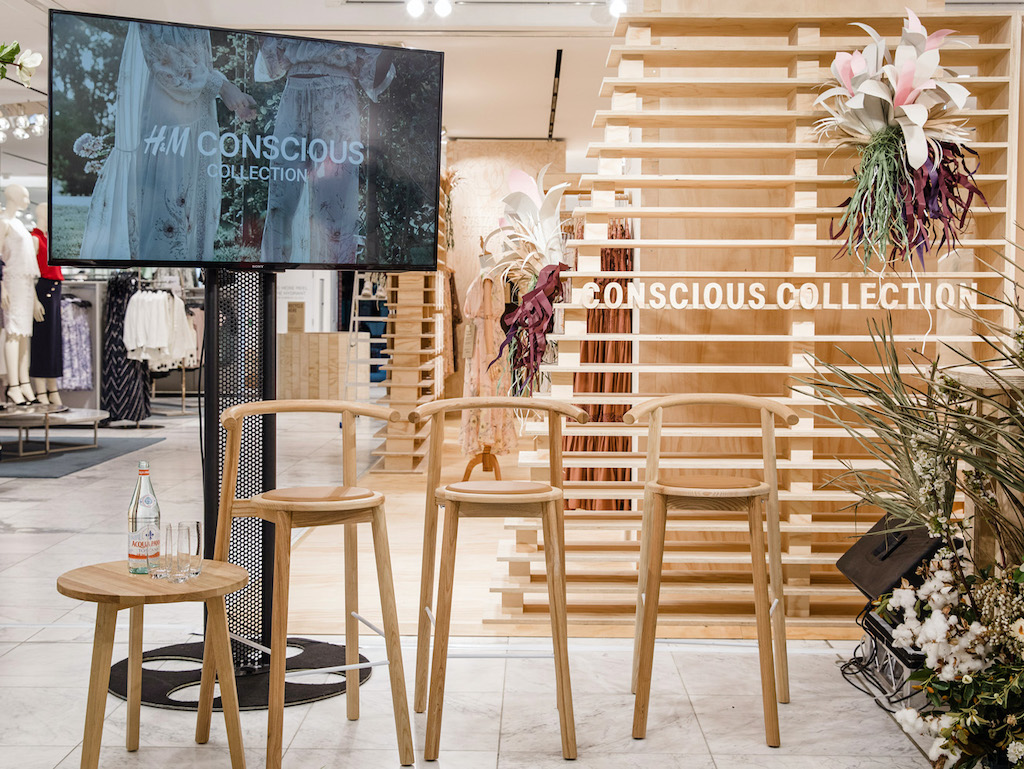7 Mins Read
Greenwashing in fashion is on the rise. Learn more about what it means and how you can tell the difference between a genuinely conscious brand and one that is just ‘performing’ sustainability.
There’s been an increasing amount of buzz around the terms ‘sustainable’, ‘eco-friendly’ and ‘natural’, in everything from fashion to food. Unsurprisingly, this comes at a time when we’re all becoming more conscious of what we buy. In particular, the rising interest in sustainability amongst Millennial and Gen Z consumers, coupled with their increase in purchasing power, is influencing businesses to take notice. However, rather than truly going green, certain brands are taking the greenwashing route instead. It’s tough enough for fashion folk to navigate the greenwashing maze, so naturally, it makes everyday consumers confused! Read on for how you can spot and avoid fashion’s ‘fake news’ trap.
What is greenwashing?
In a nutshell, greenwashing is a tactic that companies use to ‘appear’ more sustainable than they actually are. This could mean making false claims about green production practices or even purposefully being vague with facts. The term has been around since the 1960s, but American environmentalist Jay Westerveld popularised it in 1986.
How do I spot it?
Greenwashing can come in many forms. Here’s a few indicators you can look out for:
- If a brand releases ‘conscious collections’ but doesn’t use facts or figures to support its claims.
- When a brand produces just a tiny range of its product line sustainably but promotes itself as conscious, they’re greenwashing. If your company is still profiting off largely unsustainably made goods, then one surely cancels out the other.
- When a label makes sweeping marketing statements for commercial gain like ‘shop and save the planet’ or ‘look cute and protect the environment.’ These are gross overstatements and highly misleading.
- If a brand overstates its ethical or environmental efforts. For example, they could create collections from recycled polyester but not prioritise living wages for garment workers.
“When a brand produces just a tiny range of its product line sustainably but promotes itself as conscious, they’re greenwashing. If your company is still profiting off largely unsustainably made goods, then one surely cancels out the other.”
Why do brands greenwash?
As sustainability becomes increasingly trendy and we all start taking more of an interest, brands want to jump on the bandwagon. Understandably, big fashion brands want to bank on that competitive edge and attract more consumers keen on shopping consciously. But no label can become green overnight; it takes time and resources to embed sustainability into all aspects of a business. Rather than work out the nitty-gritty of truly integrating sustainability into their supply chain, some companies use marketing tactics to paint a greener picture instead.
On top of that, its been proven that companies do better when they make us feel better about our purchases. Brands who are genuine are more likely to value transparency and share their progress with their customers. Everyone likes to believe that their hard-earned money is going towards something good, be it quality materials and craftsmanship or supporting rural communities. Unfortunately, some brands that greenwash use this narrative to convey the same sentiments to us without making real change.

How do fashion brands get away with it?
The biggest loophole in sustainability is that it does not have a clear, quantifiable definition. As it stands, terms like ‘ethical’ or ‘eco-friendly’ have no legal meaning, so companies cannot be held accountable for their actions (or lack thereof) by the law. This nuance surrounding sustainability is partly due to the lack of empirical data and government funded research on fashion’s impact.
As more environmental non-profits and other organisations begin to study and dig deeper, we uncover staggering data. Research by the Ellen MacArthur Foundation estimates that textile manufacturing consumes 98 million tons of nonrenewable resources — from oil that goes into synthetics fibres to fertilisers to grow cotton — and 93 billion cubic meters of water annually. The International Energy Agency estimates that the textile industry also generated 1.2 billion tons of greenhouse gas emissions in 2016, which means fashion’s carbon footprint is larger than international flights and maritime shipping combined.
Another reason why brands are able to get away with greenwashing is due to the lack of mainstream public awareness around what really happens behind the scenes in the fashion industry. Before documentaries like The True Cost or even Hasan Minhaj’s episode about fast-fashion, many consumers were unaware of fashion’s supply chain. Garment labels could say ‘Made in Italy’ while being manufactured somewhere else, only having the tag sewn on in Italy. Many prefer natural fabrics, considering it a more ‘eco-friendly’ choice, but the fact that it takes 2700 litres to make one cotton tee is lesser-known. In short, brands can take advantage of the lack of regulation and public education to continue spewing false information.

Every time you spend money, you’re casting a vote for the kind of world you want.
Anna Lappé
Read: ‘Vote With Your Dollar’: The Mother-Daughter Duo Who Changed How We Think About Food
How can you avoid greenwashing in fashion?
1. Don’t let marketing fool you, always look for evidence
Instead of being swayed by fancy terms, check online or in-store for clear information about a company’s sustainability agenda. Brands who genuinely prioritise sustainability will make a point to share it on their website and through their messaging. While this requires more effort, it means you’ll identify greenwashing faster in the future.

2. When in doubt, look for facts and figures
Truly sustainable fashion brands are more likely to state information about their suppliers, production facilities, materials used and the impact of their decisions. Transparency is always the first step towards accountability. Most importantly, because of how complex the fashion supply chain is, there are many people involved that go unheard of. It’s important to look a bit deeper, such as where a brand’s cotton is farmed or polyester recycled, where is it dyed and produced, and even where they source small stuff like buttons or zippers.
SEE ALSO
3. Look for certifications — but they’re not the be all and end all
If a brand says that their products are ‘100% organic cotton’ or ‘cruelty-free,’ check whether its been certified. From Fair Trade, EcoCert and B Corporation to PETA, GOTS or BCI, these certifications all serve the same purpose: to evaluate a brand’s sustainable practices.
But remember: sustainability is a journey for brands of all sizes, especially emerging labels. Their suppliers often can’t get certified for a number of reasons, including how expensive certification is. In sum, not seeing a certification doesn’t mean a brand isn’t walking the walk. If you’re truly curious, contact the company about their practices. Most will gladly explain their processes and be as transparent as possible.
4. Natural isn’t always 100% eco-friendly, and vegan doesn’t always equate to cruelty-free
While natural fabrics are favoured by sustainable brands because they are breathable and biodegradable, they still have an impact. Read our WTF: What The Fabric guides on how even cotton and linen have social and environmental ramifications beyond what we can see and feel. The same goes for vegan materials. Most are made from synthetic, petroleum-derived fabric. So unless you find plant-derived vegan products, take the term ‘vegan’ with a pinch of salt too.
5. Look beyond the overhyped and irrelevant
There are plenty of brands who hype up their sustainable choices to overshadow their other not-so-great ones. For example, recyclable packaging means nothing if a brand isn’t addressing textile waste or changing their business model. Neither does creating a sustainable capsule collection when it doesn’t even constitute 10% of their total production.
6. Focus on brands with a holistic approach to sustainability
Support brands that integrate sustainability into everything they do — not just one collection or a handful of pieces. Look at how they approach product design, manufacturing, shipping, packaging; the works.
Go green, don’t greenwash
The silver lining to all this? The rise of greenwashing proves that sustainability is becoming a real priority for brands. While you may have been fooled in the past, don’t forget there are companies putting real effort in. In the end, the process of demystifying greenwashing makes you a more conscious consumer, that’s a win. Learning more about the clothes we wear is a major part of anyone’s sustainability journey. Ultimately, it will help you discover better brands whose values truly match yours.

This story was originally published on ZERRIN is a Singapore-based platform driving awareness of sustainable fashion & beauty. A media hub and marketplace, they curate inspiring brands and helpful resources so you can build a wardrobe that’s kinder to people and the planet.
Lead image: Studio Paperform image and installation design for HM Conscious.




